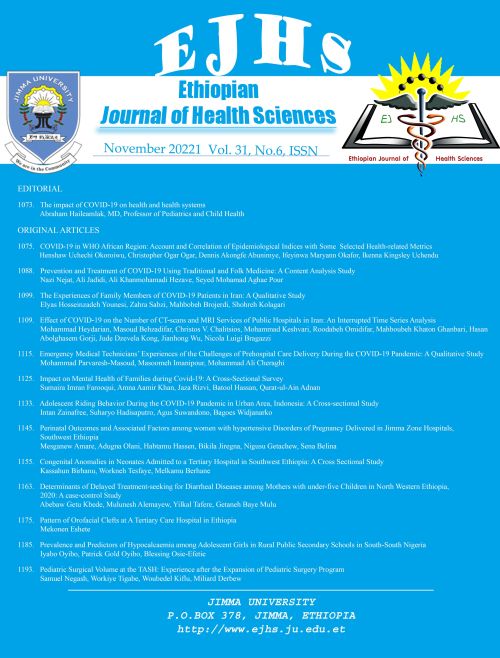Main Article Content
Trends in Operative Delivery in Tikur Anbessa Specialized Hospital, Addis Ababa, Ethiopia: A 5 years’ Retrospective Review
Abstract
BACKGROUND፡ Operative vaginal delivery refers to the use of measures to accomplish vaginal delivery through the use of instruments, mainly obstetric forceps and vacuum cups. In developed countries, the rate of cesarean section is increasing for fear of vaginal delivery complications, including instrumental delivery. This study was done to explore trends of operative vaginal deliveries and their characteristics
METHODS: A cross-sectional, facility-based retrospective study was conducted over a period of five years July 1, 2011, to June 30, 2016, using data collected from the labor ward logbook, patient charts. Data were coded, entered, using SPSS version 20 statistical software. Descriptive statistical analysis was used to describe and analyze the data into graphs and tables.
RESULTS: The rates of operative vaginal delivery and cesarean section over the five-year study period were 11.9% and 30.4%, respectively. The trend in the operative vaginal delivery rate declined from 15.8% in July 2011 to 9.9% in June 2016, while it shows a noticeable rise in cesarean section rate 25.4% to 33.8%. The trend in the use of vacuum has shown a sharp decrease from 58% in the 1st year to 10.5% in the fifth year of the study period. There is a rise in the use of forceps from 42% of all operative vaginal delivery in the first year to 89.5% in the fifth year
CONCLUSION: This study shows that the rate of operative vaginal delivery has declined. The use of vacuum-assisted delivery has especially decreased compared to that of forceps-assisted delivery.




